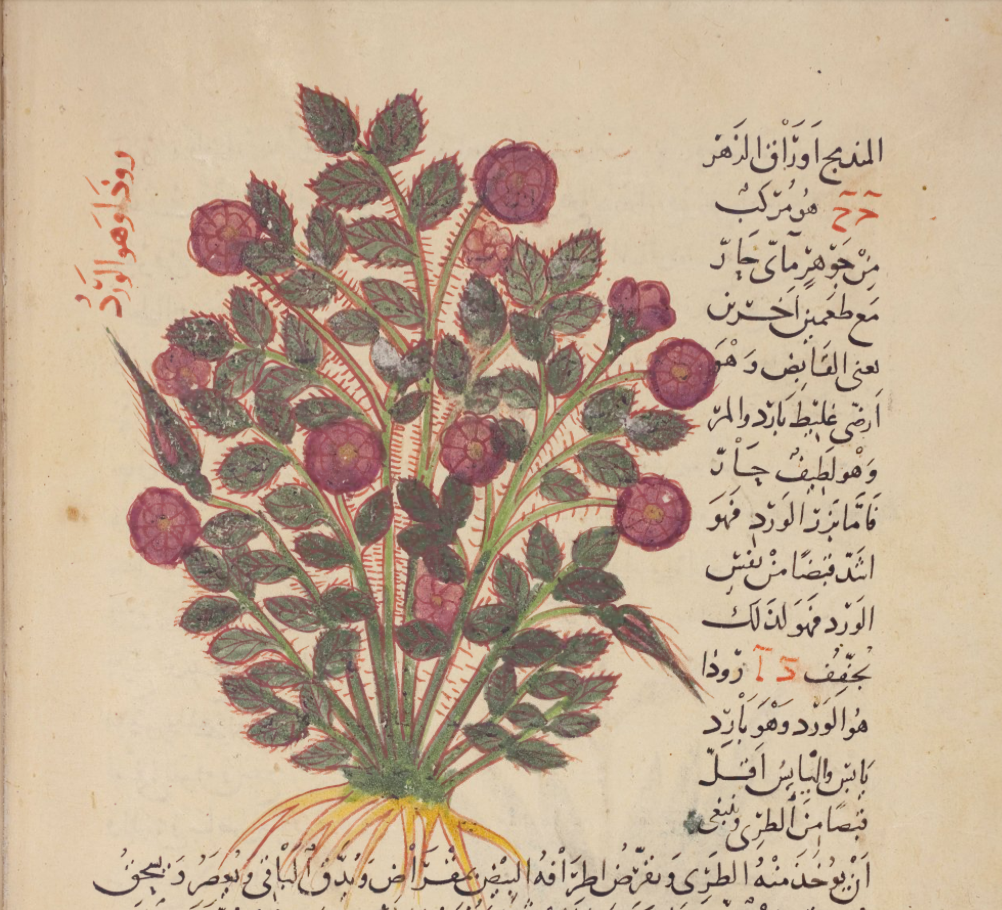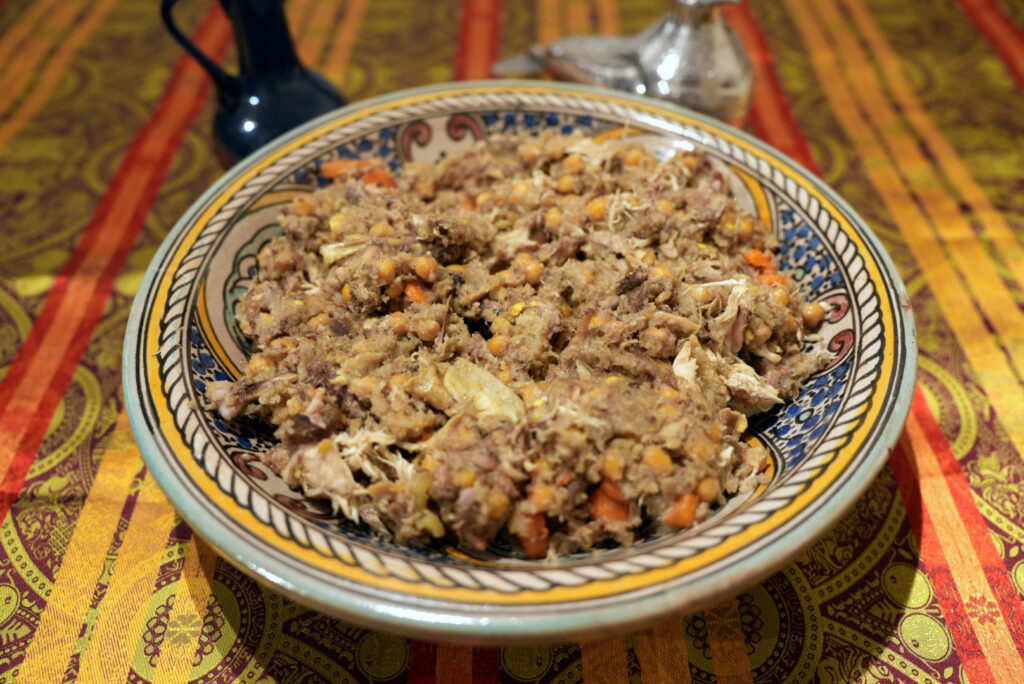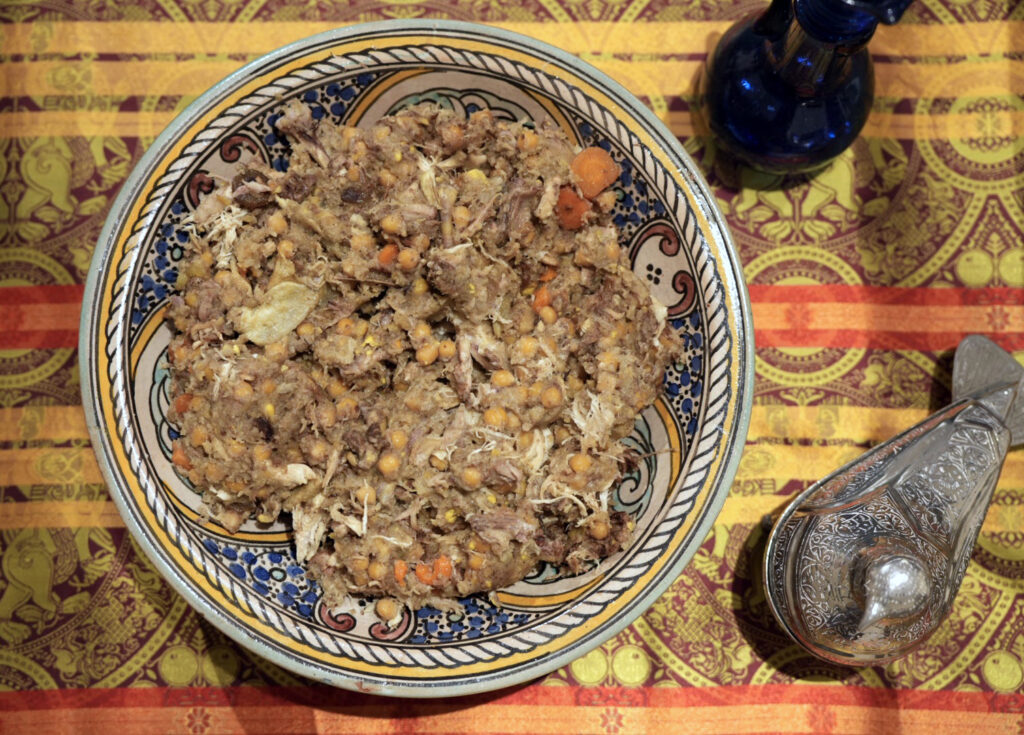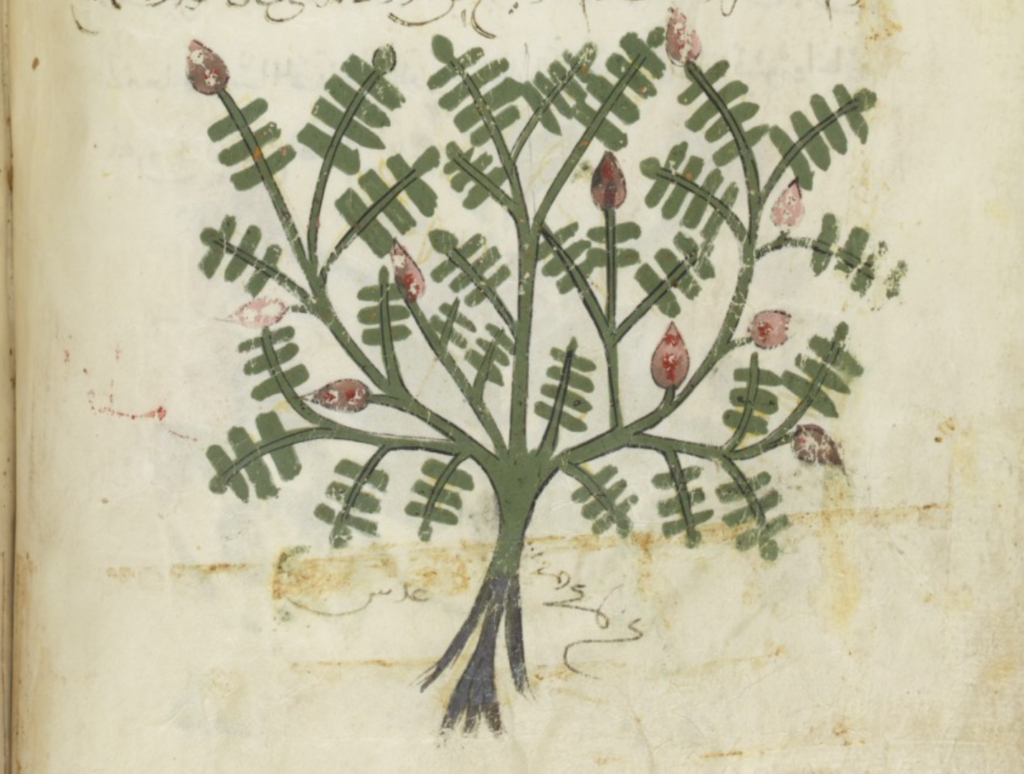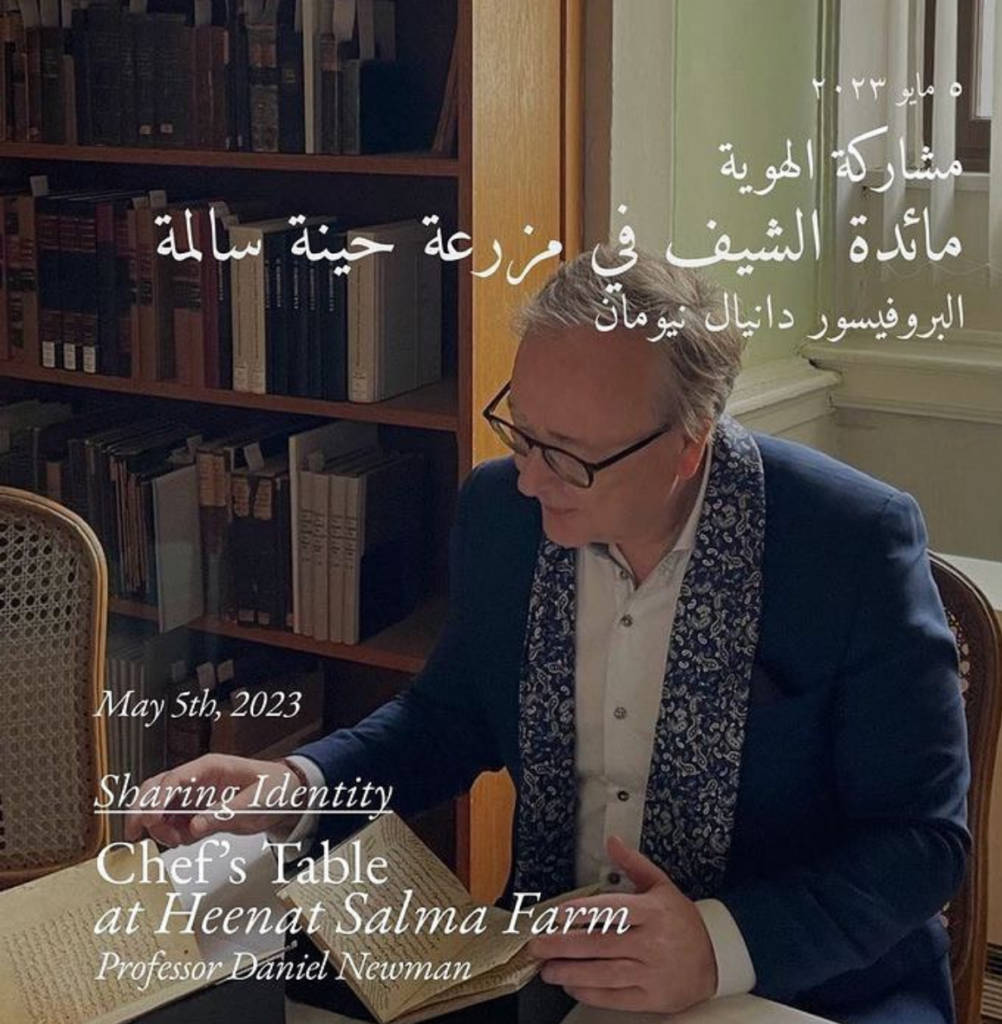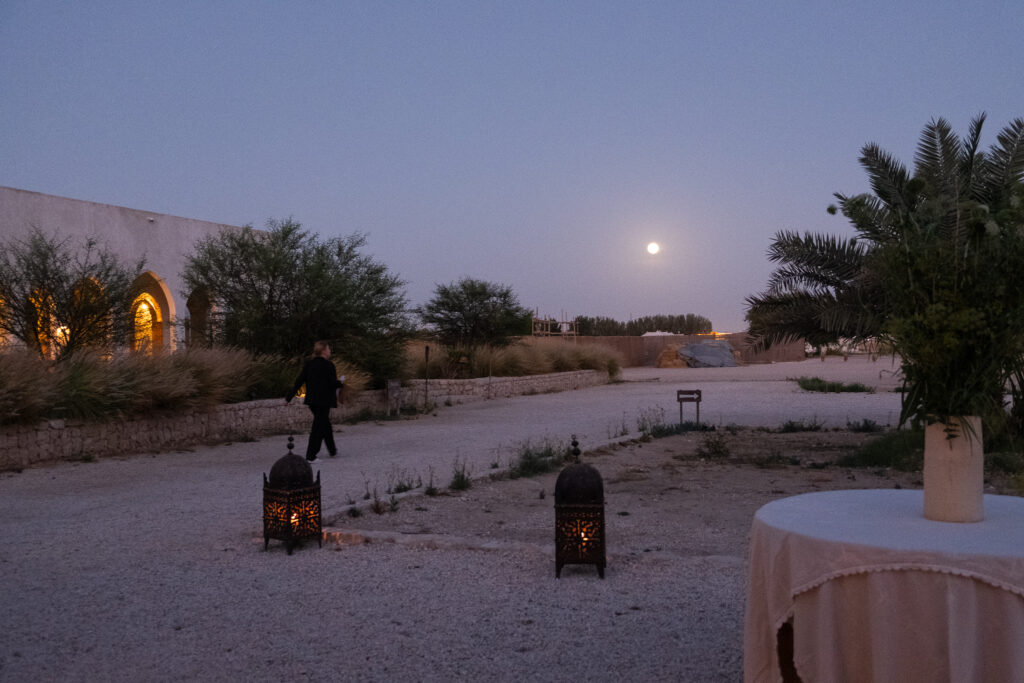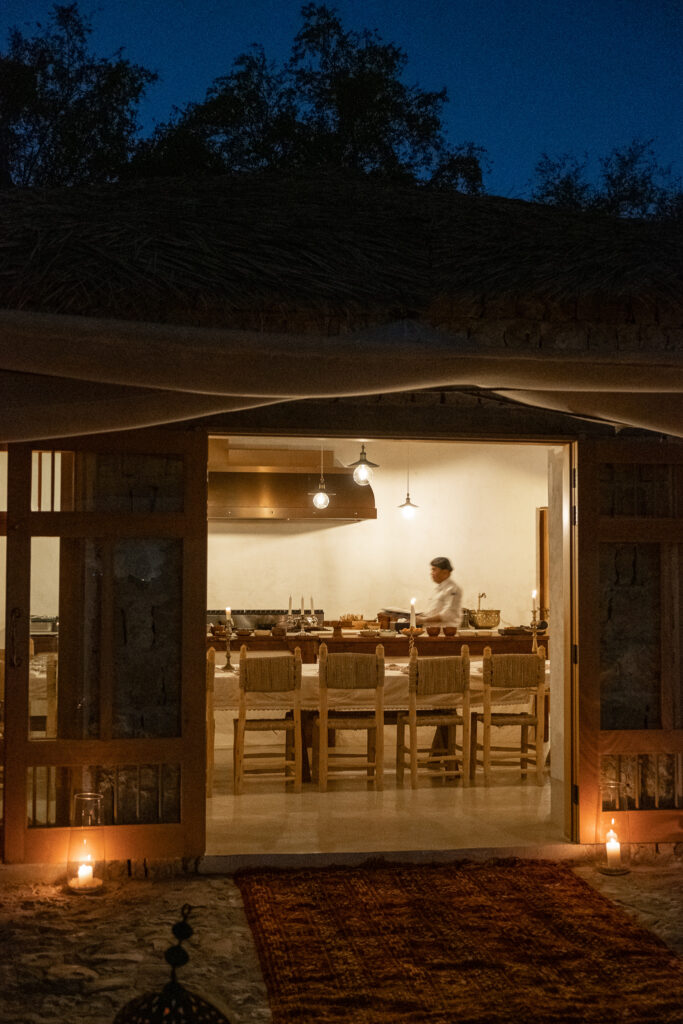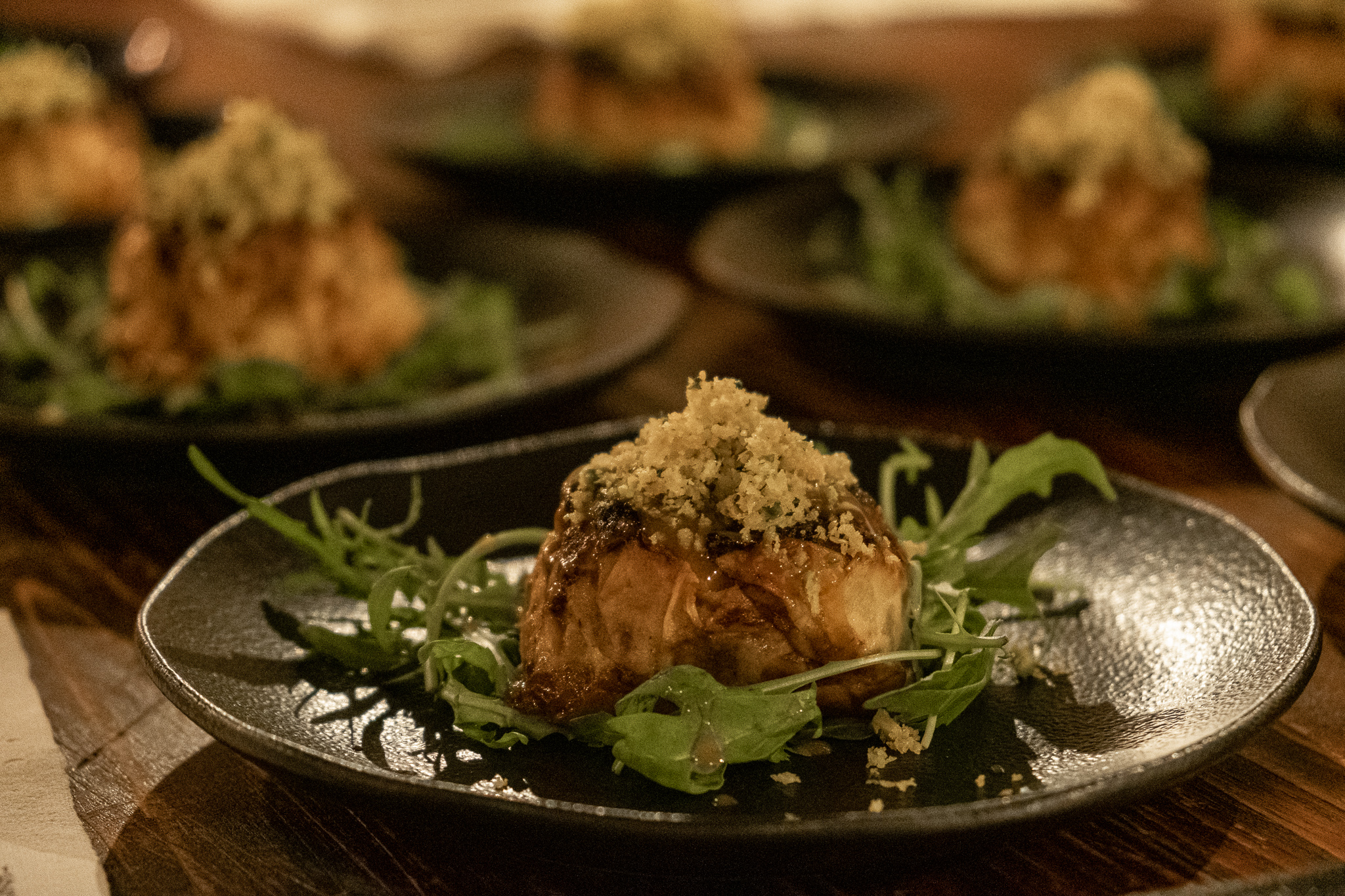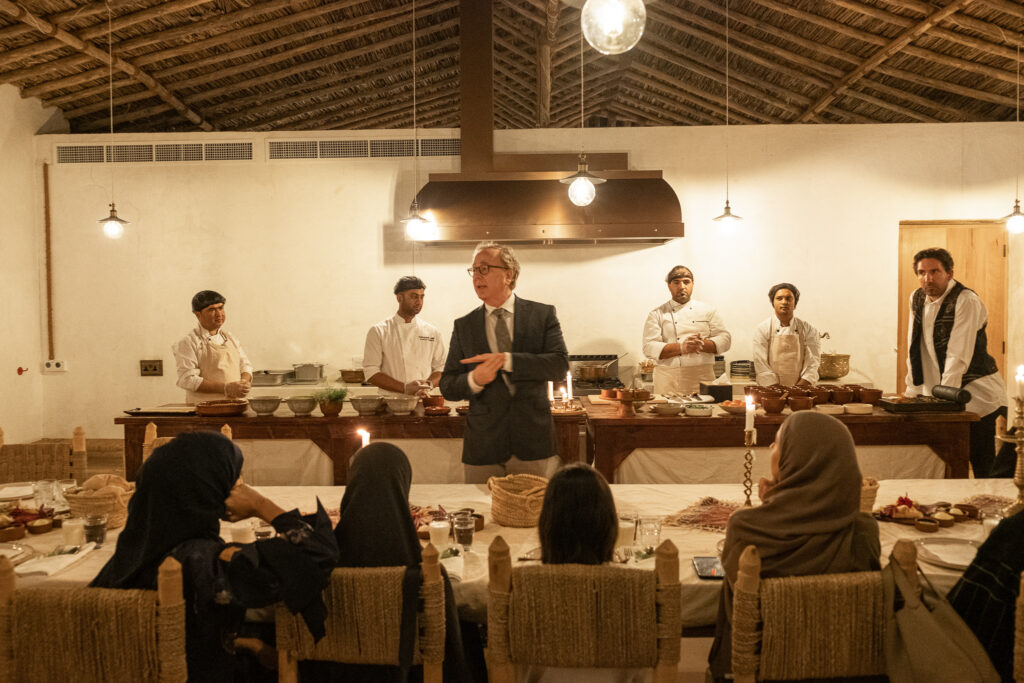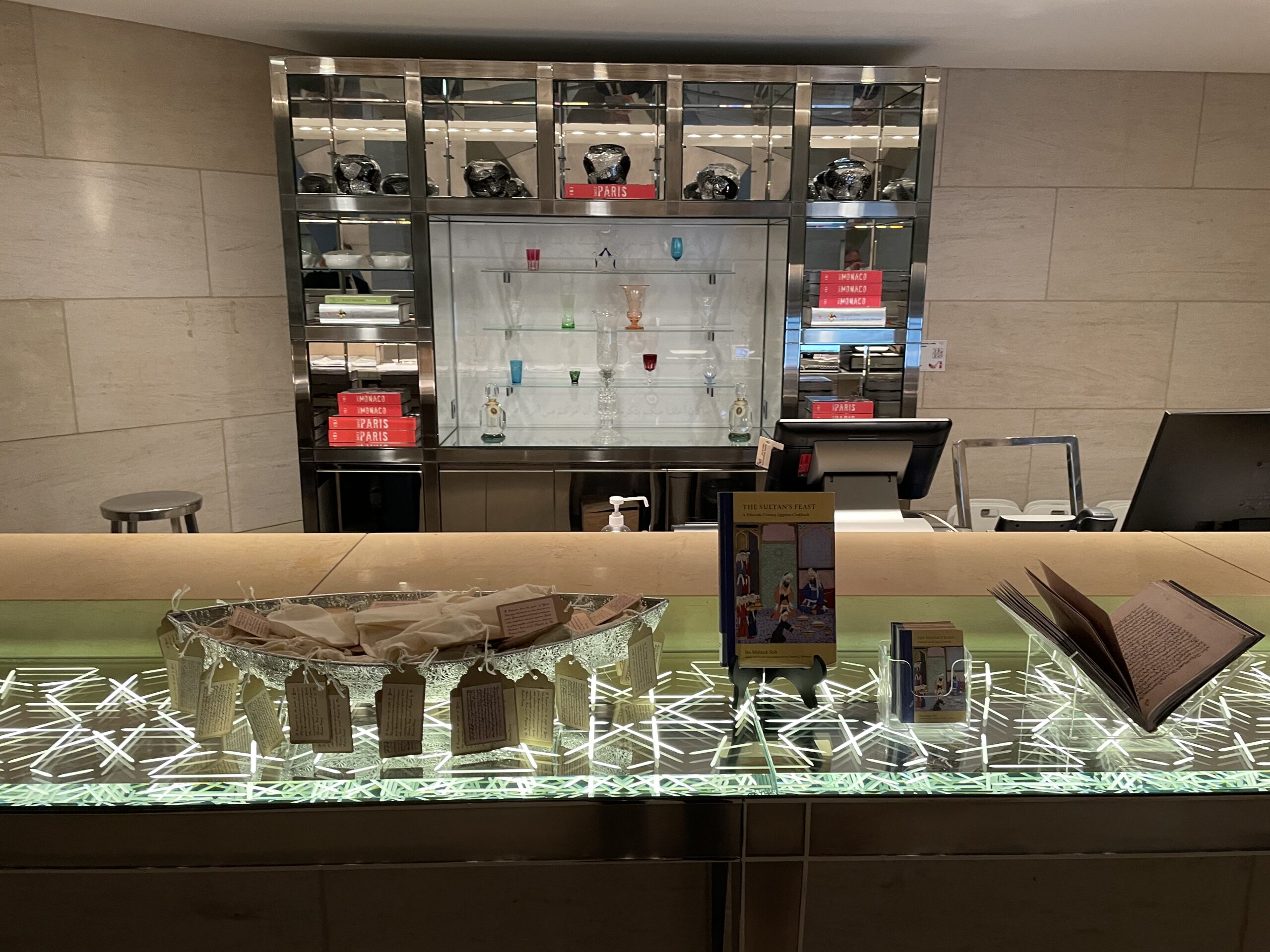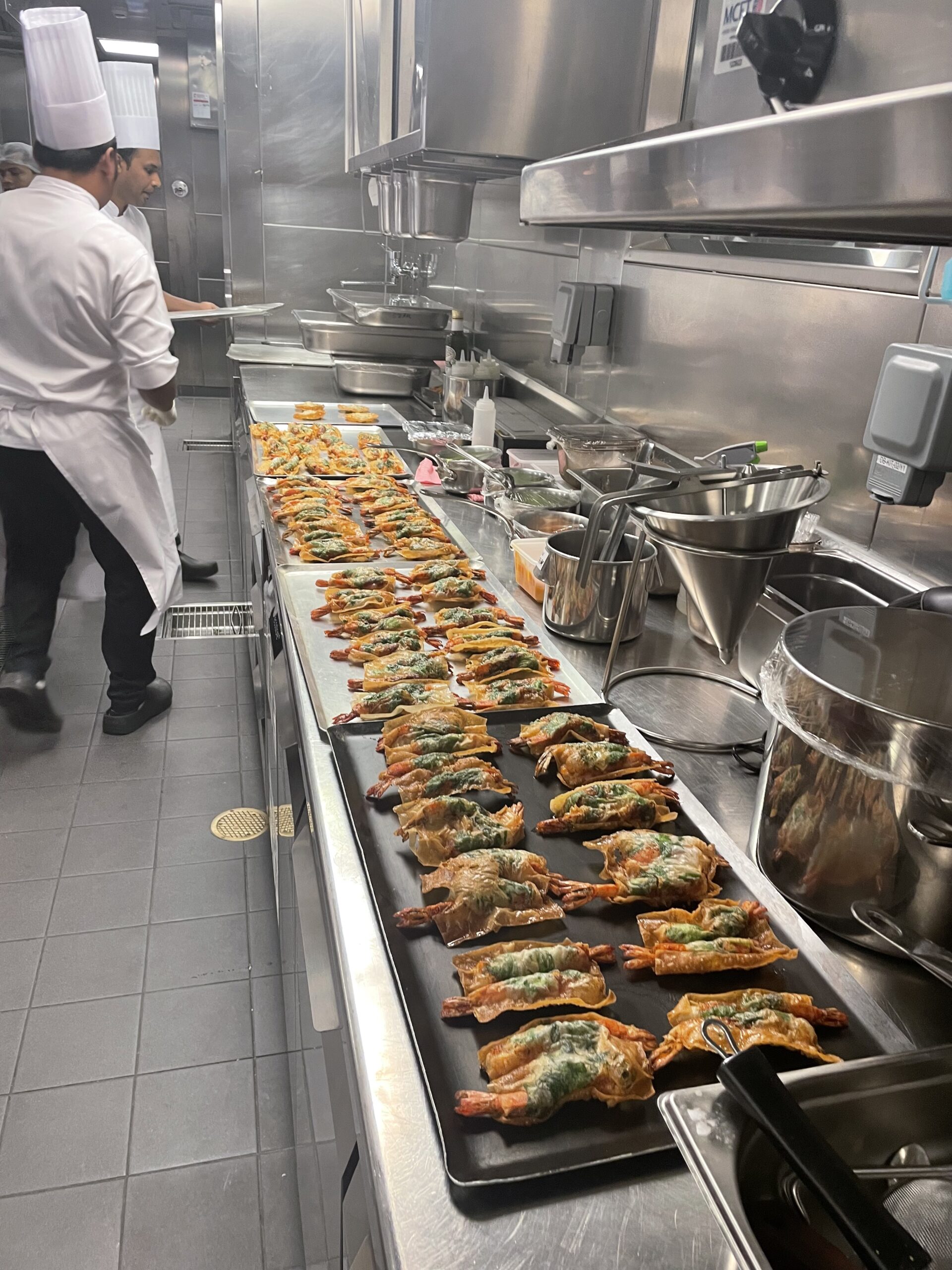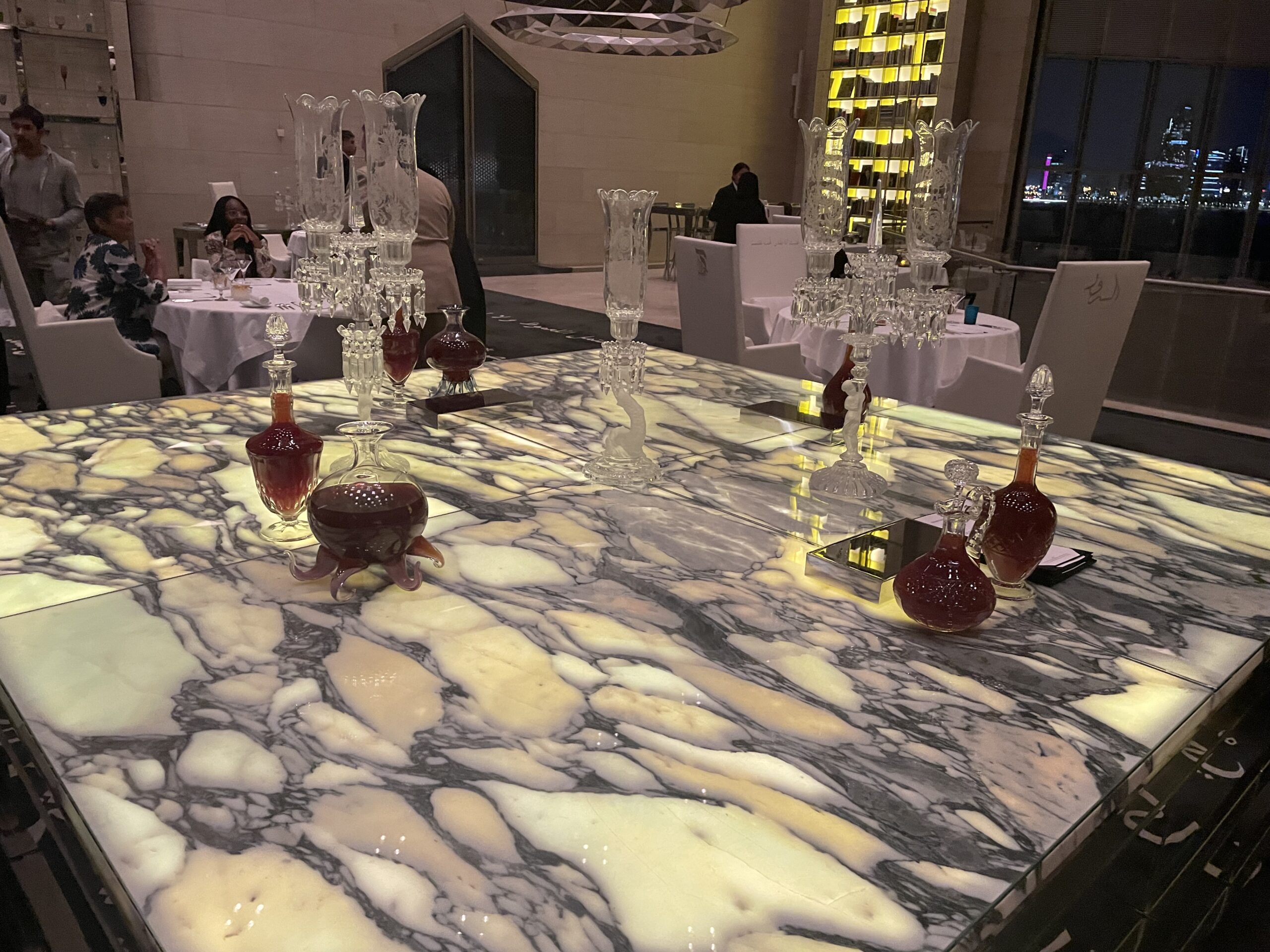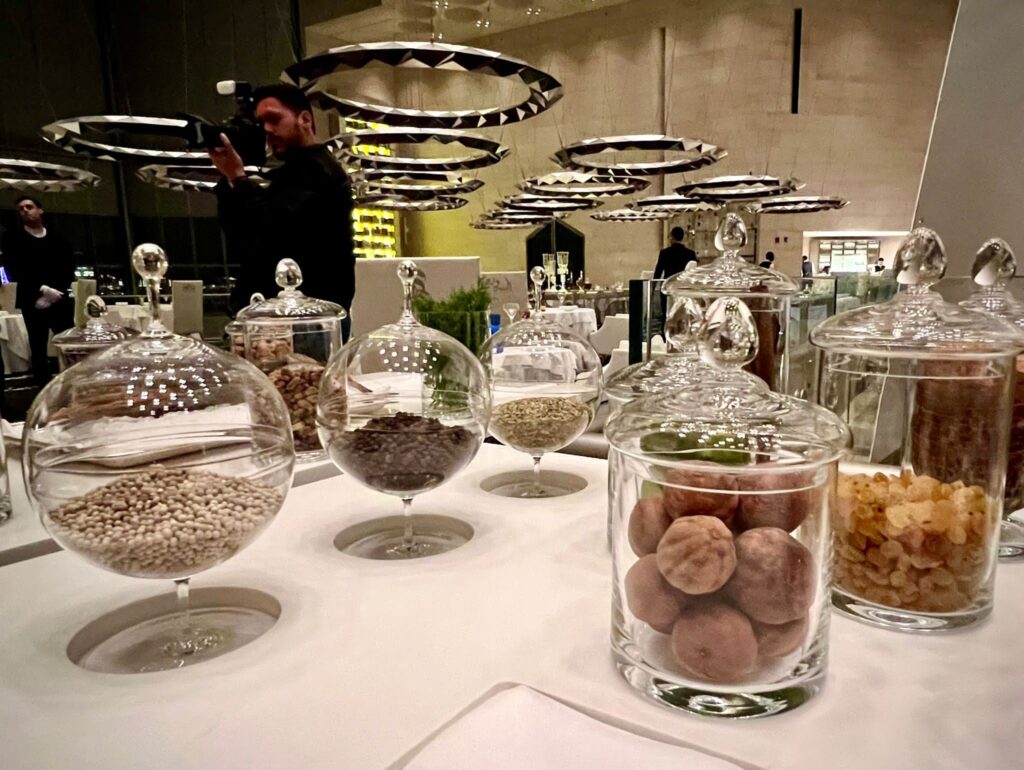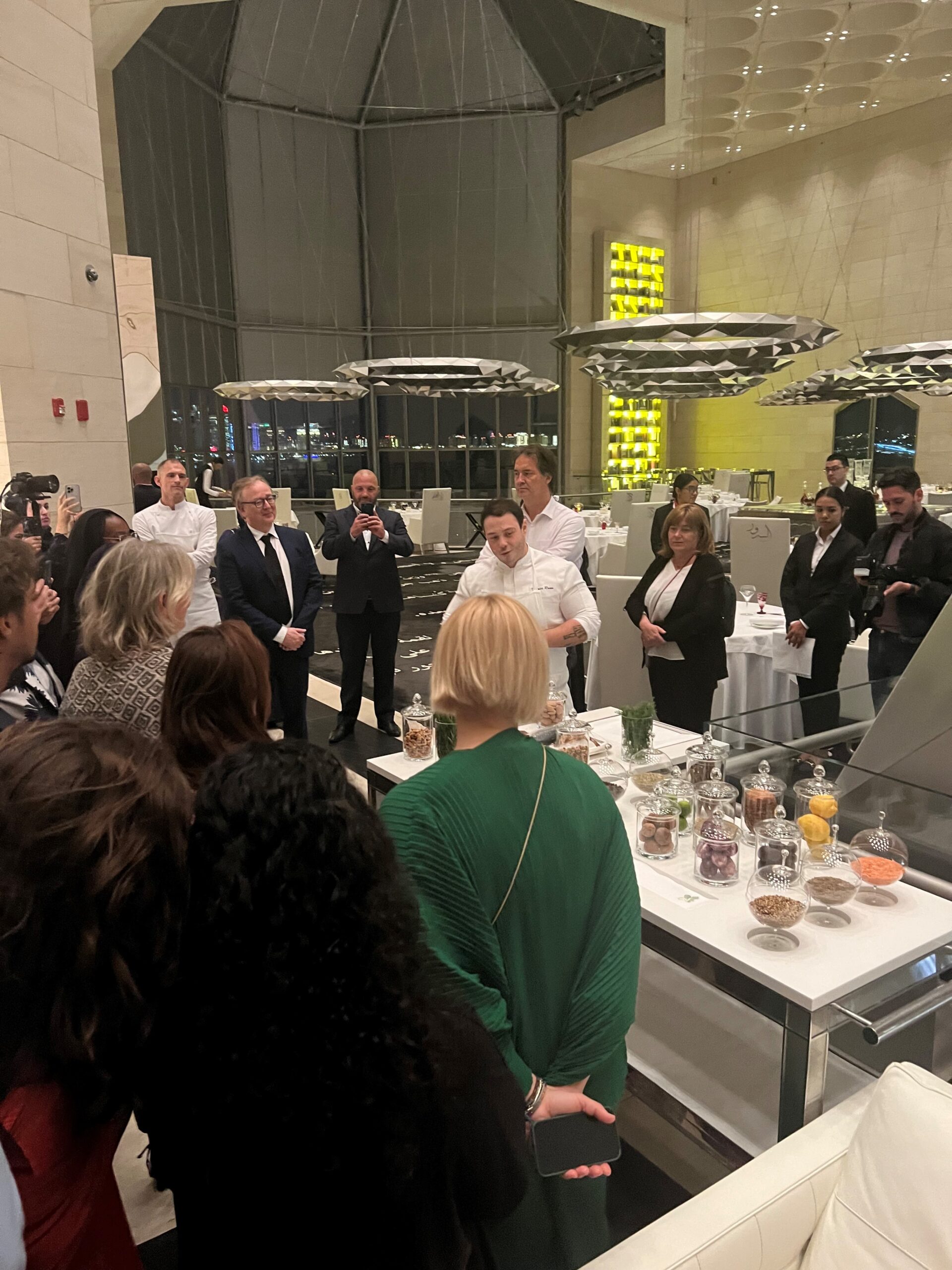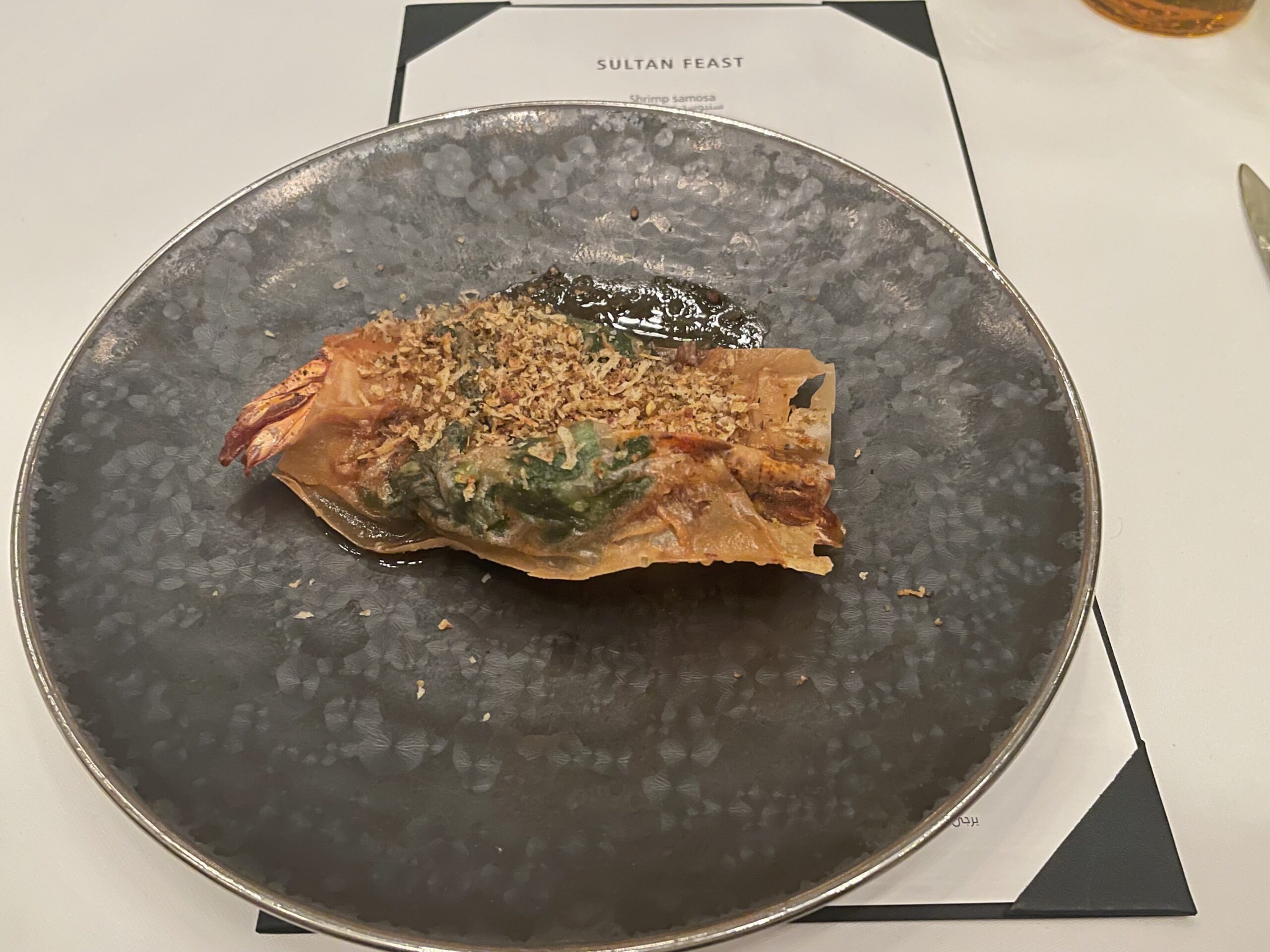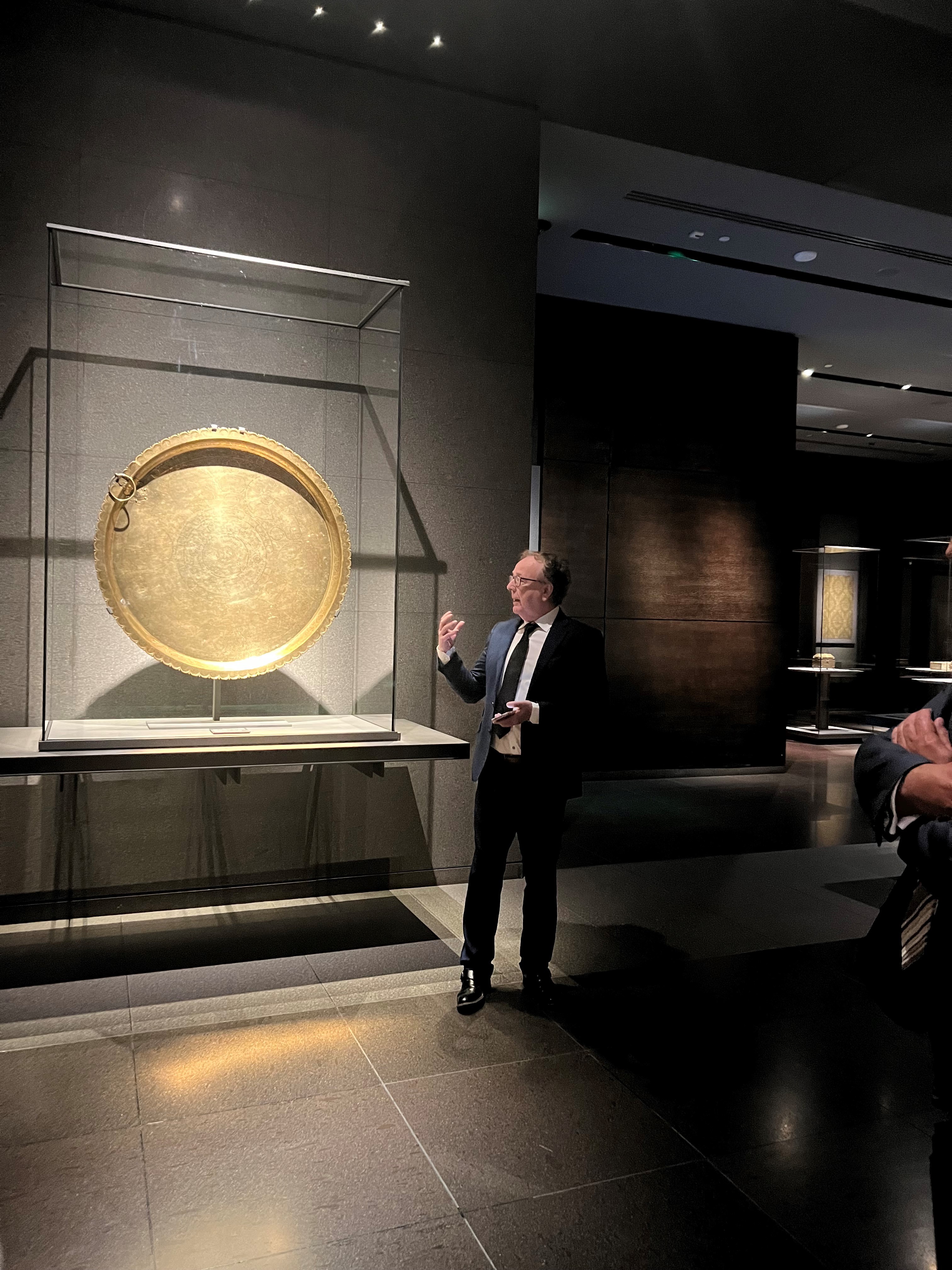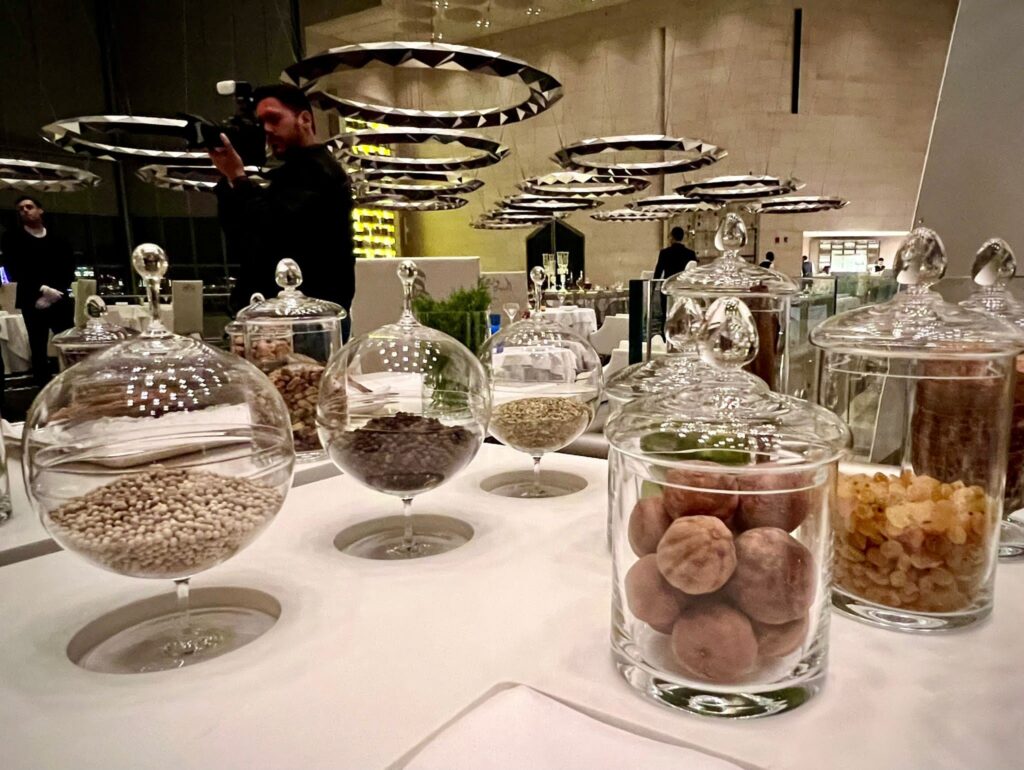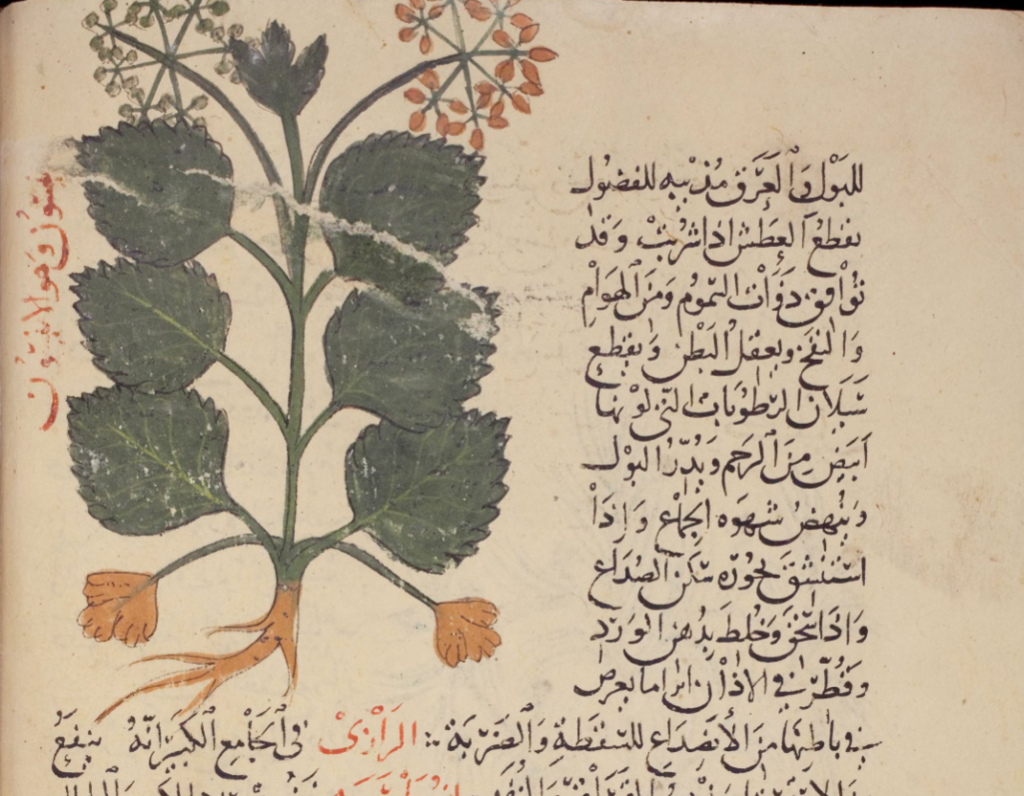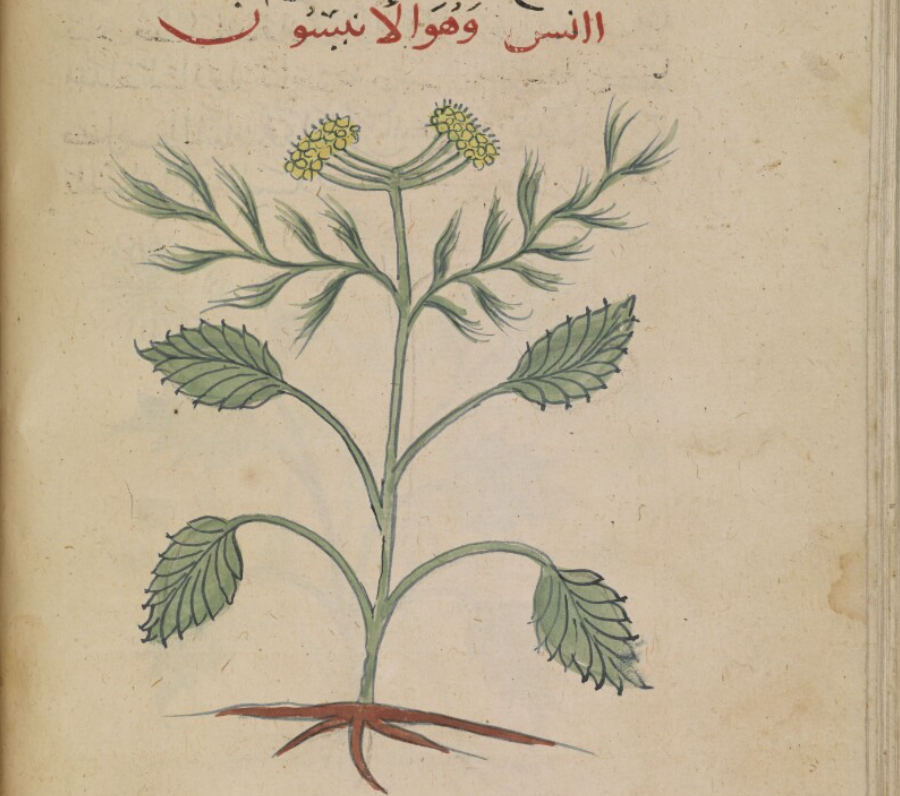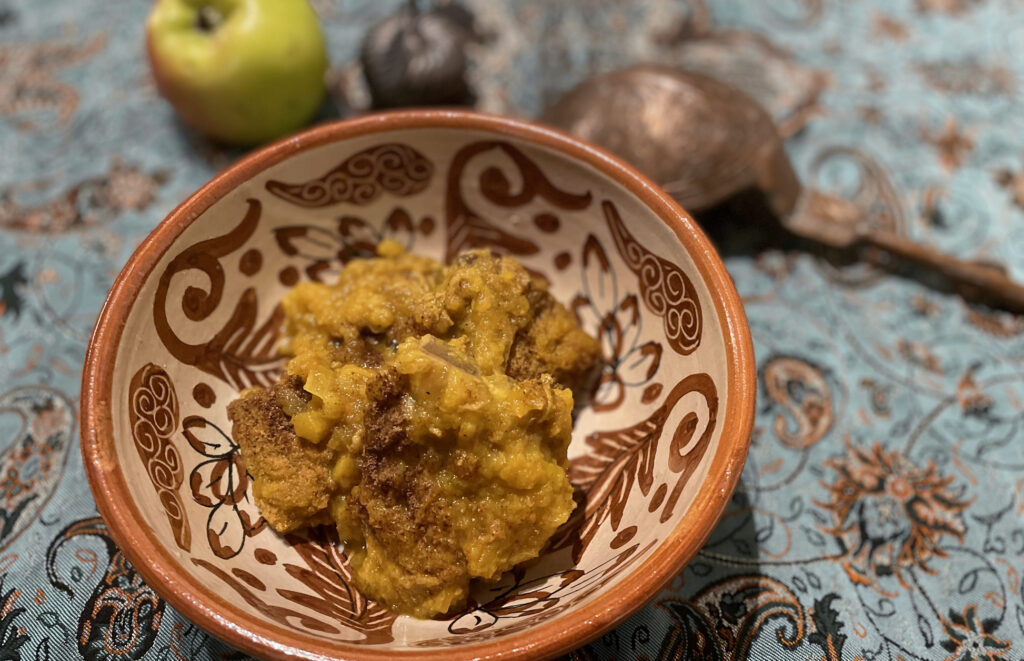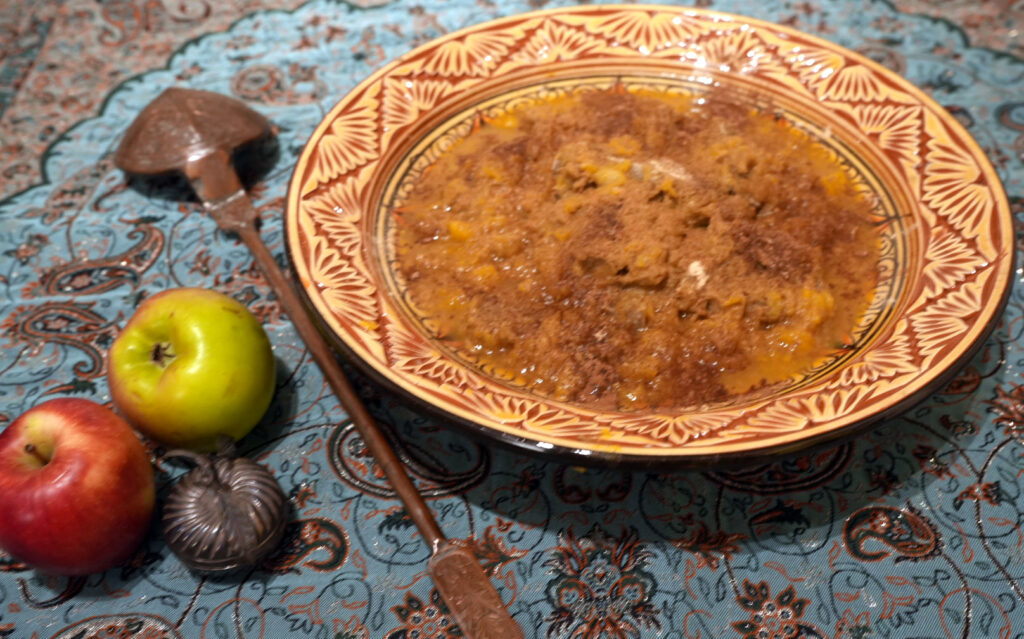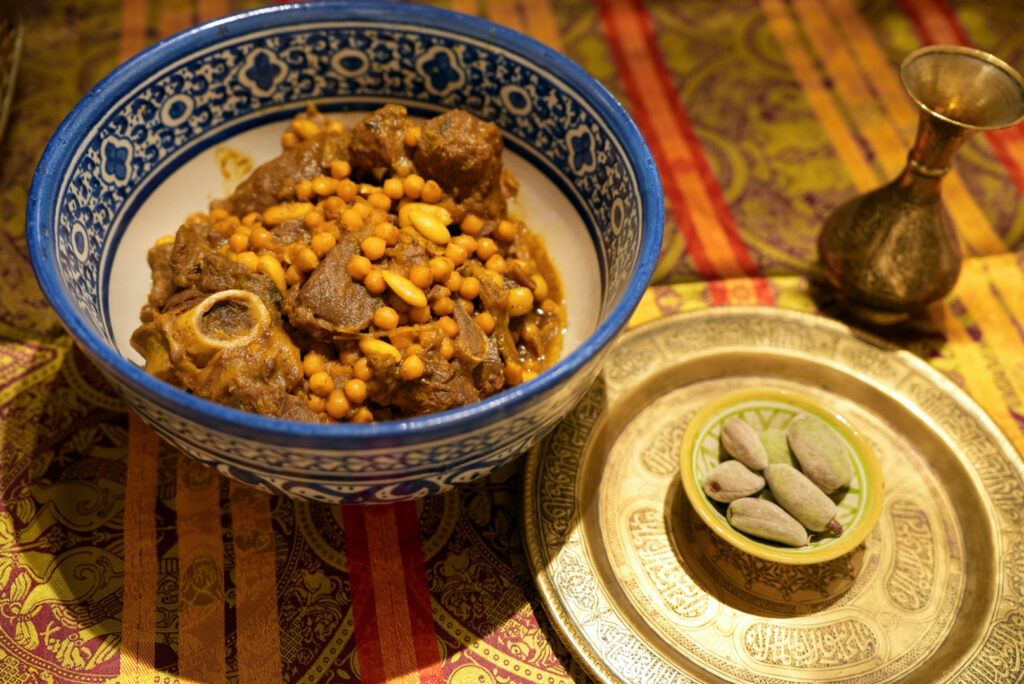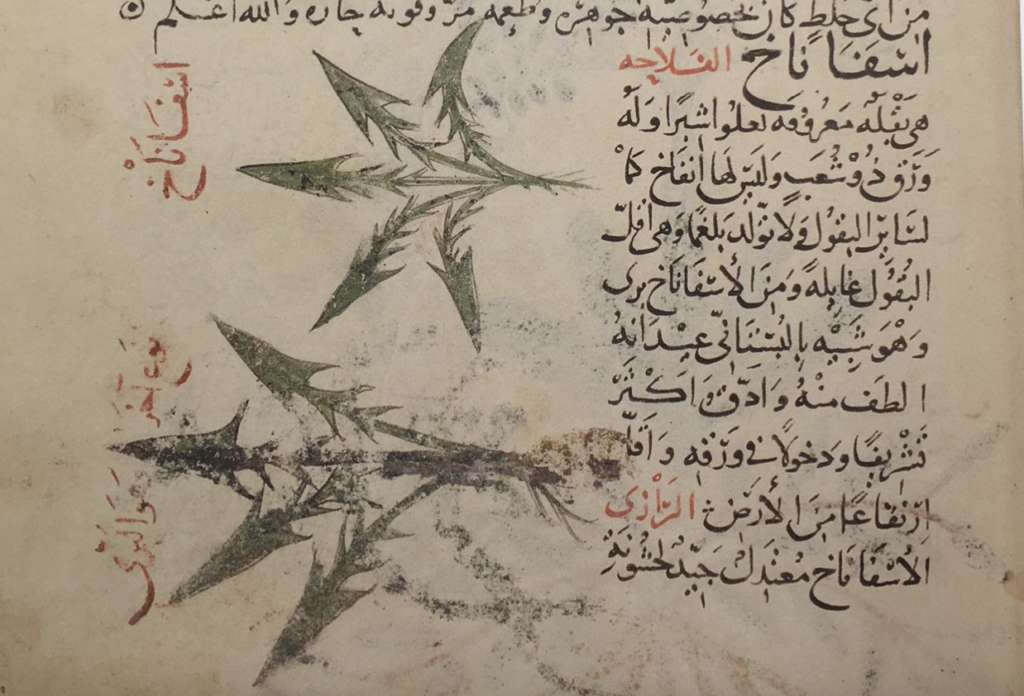Roses were first cultivated several thousand years ago in ancient Persia, which is also where rose distillation was first performed. The flower comes in a number of varieties, but the so-called ‘damask rose’ (Rosa damascene) is probably the best known and most-used. To the ancient Greeks, the rose was a symbol of love and beauty, and they used it in perfume, as a food flavouring (the petals), and to make rose syrup, rose jam, and even a rose wine (rosatos).
In medieval Arab cooking, roses (usually known as ward but sometimes also by their Persian name gul) were used in a variety of applications. The best roses were thought to come from Persia and the town of Nusaybin (نصيبين), currently in Turkey. The parts that were used were the petals, buds and rose hips (the fruits). The petals served to make a popular conserve with honey, known in medieval times as murabbā or julanjubīn (from the Persian gul and angubīn/’honey’. Petals are also the main ingredient for a spectacular khabis from Mamluk Egypt.
The most famous product was, of course, rose water (ماء الورد, mā’ al-ward), which involved the distillation of the petals by means of an alembic. It, in turn, formed the basis for rose-water syrup, jullāb (جلاب), a Persian borrowing meaning ‘rose (gul) water (āb)’! Rose water was used in all kinds of dishes, both savoury and sweet, and additionally was often also wiped along the sides of the cooking pot to scent it.
Finally, roses (usually rose water), were a frequent ingredient in perfumes, hand-washing powders, and the such.
Ibn Sina reported that pulverized roses help in extracting all type of warts, while the flower was also beneficial in the treatment of ulcers, and even to help extract arrow tips and thorns.
Rose water became popular in medieval Europe where it was introduced through the Crusades. Today, there are a number of throwbacks to medieval dishes, whether it be Turkish delight and baklava, or the Indian dessert gulab jamun and gulkand. The leaves and rose-hips are also still used to make syrup or teas.
